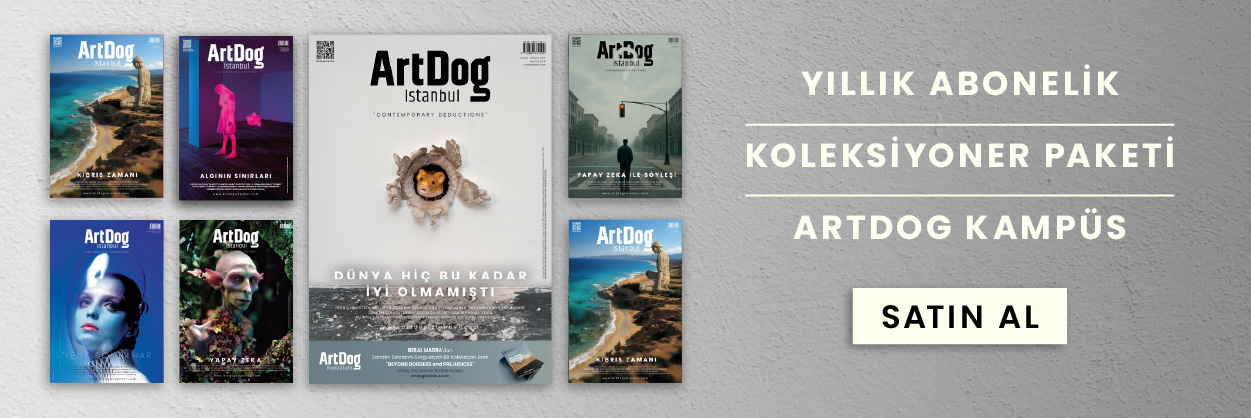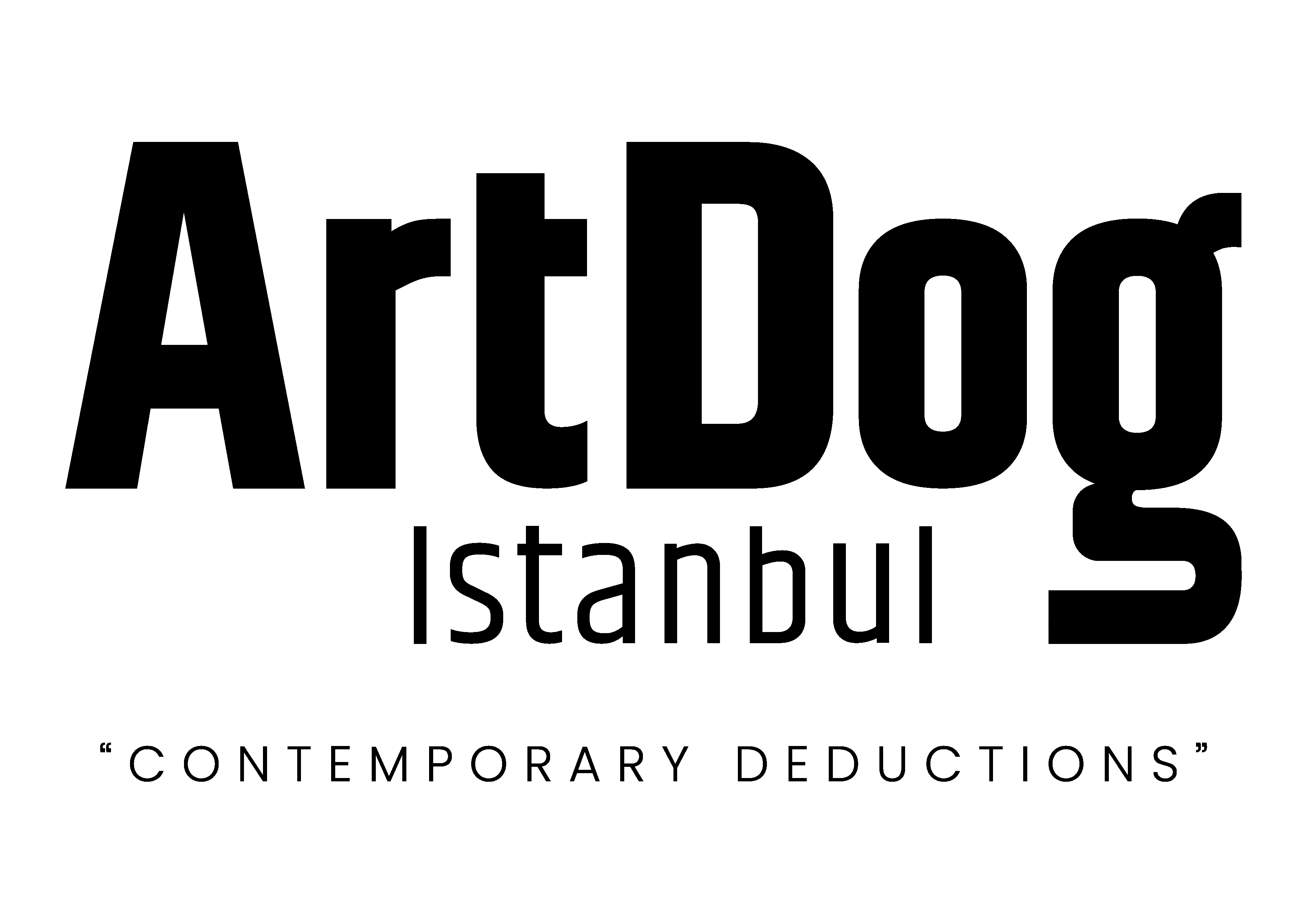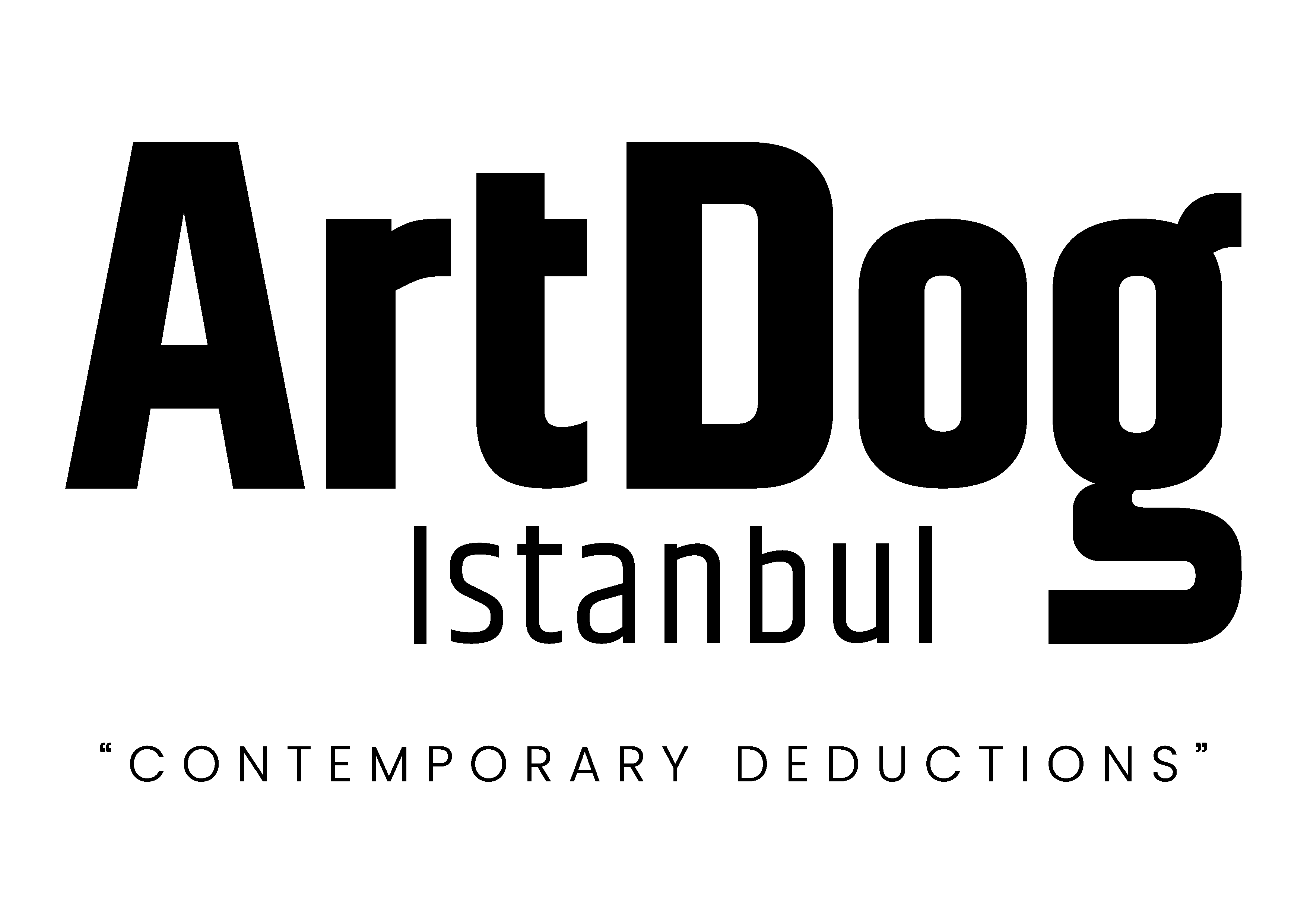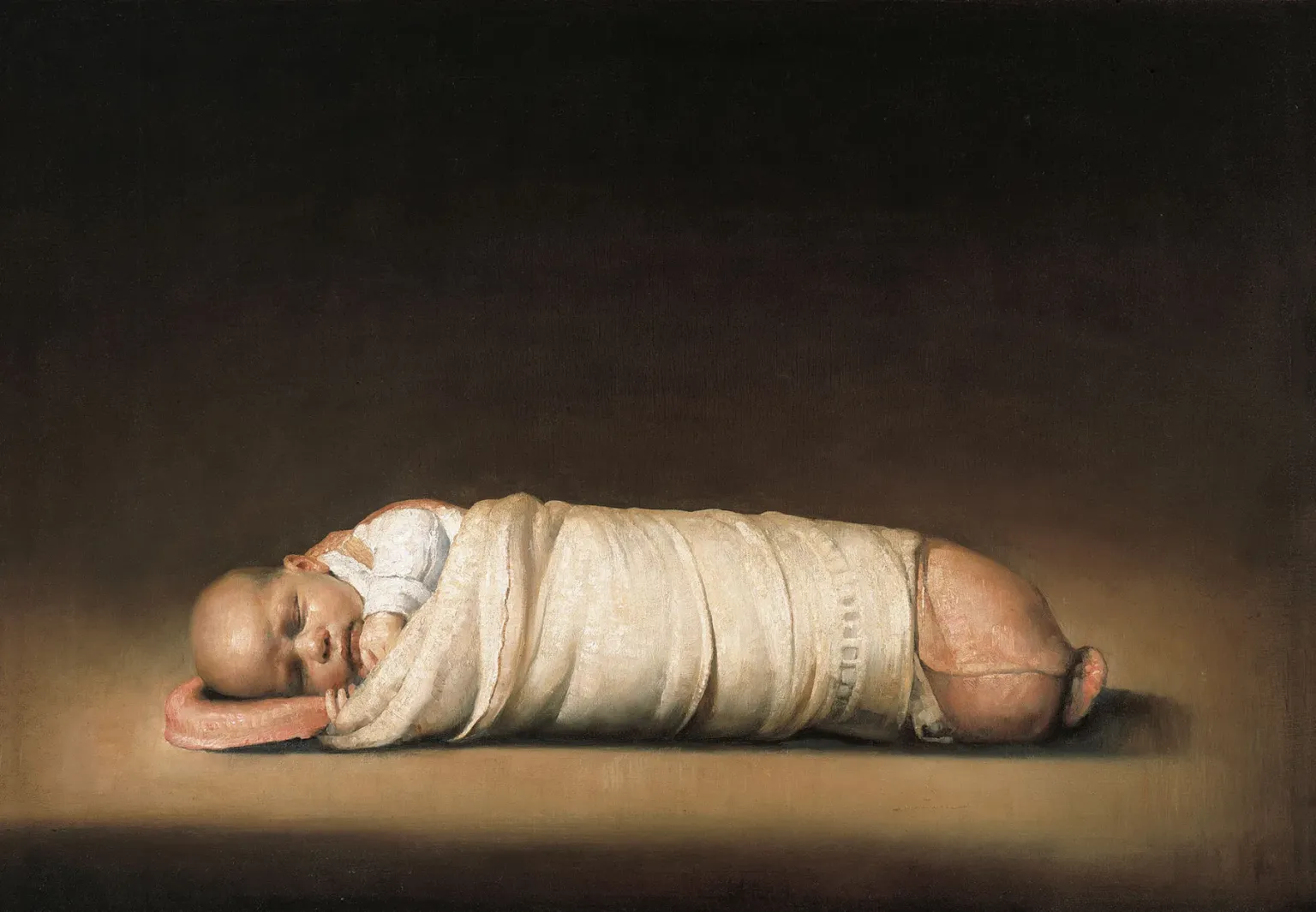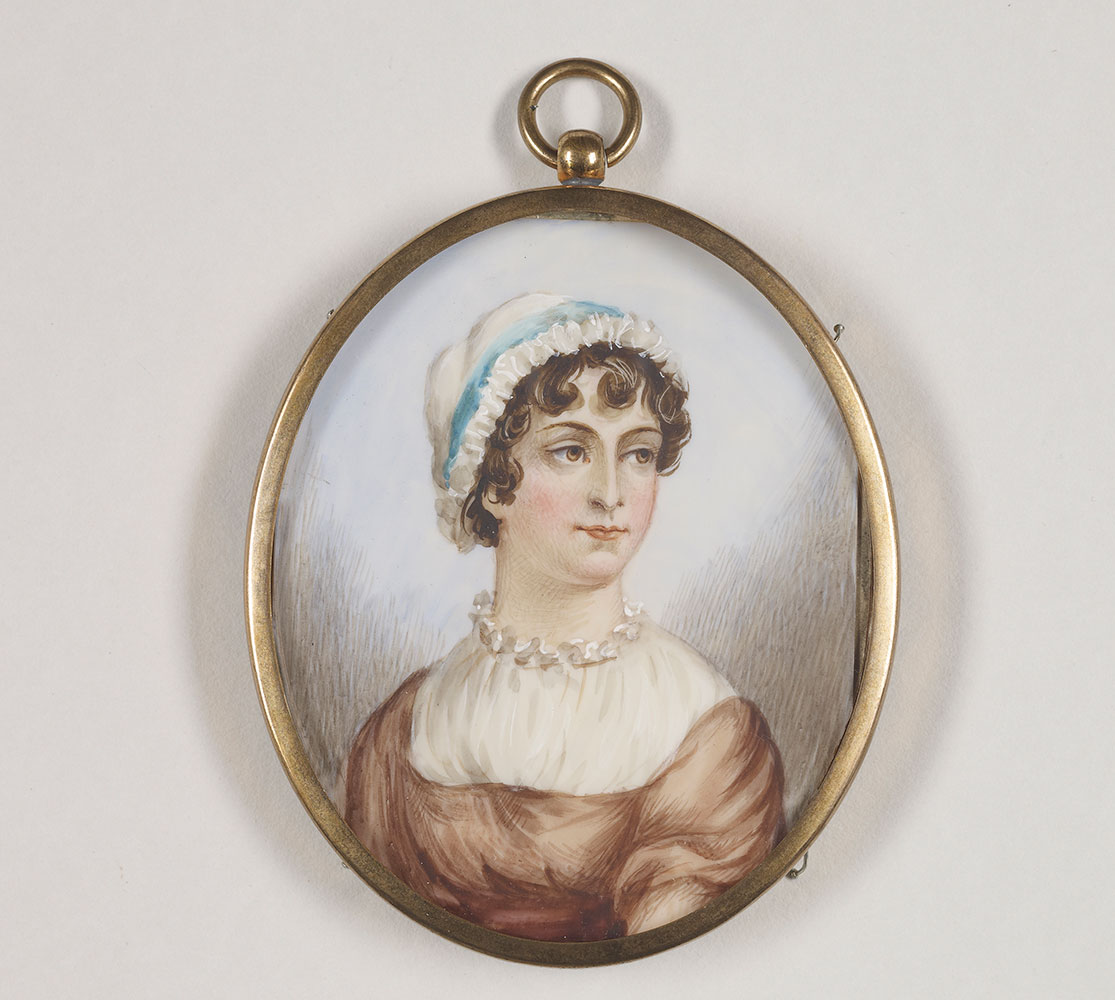Since it first appeared, kitsch has slowly made its way into our daily lives, and over time it has become increasingly difficult to tell what is true art and what should be called kitsch, or can something be art and kitsch at the same time? Often, the line between the two is unclear. Many of us tend to label things as kitsch when we find them ugly, overly decorative, or too simple. Yet some artists have challenged this idea, taking inspiration from old masters and combining it with kitsch elements to create something fresh and original. Today, even as we struggle to define what kitsch really is, the concept itself continues to evolve, gaining new interpretations and pushing the boundaries of how we understand art.
What is Kitsch? The Blurred Line Between Art and Vulgarity
The term “Kitsch” is usually used for the objects that has no artistic touch, vulgar looking and far away from the aestetics. For some, defines kitsch is “a so-called work of art that aims to evoke emotions through primitive means; a worthless object with no artistic value, something vulgar, a display of poor taste.” Kitsch is the attempt to produce a cheap imitation of existing art or to create “non-art as art.” Simply put, kitsch refers to visual products that lack aesthetic depth, provide instant gratification, and appeal to emotions in a superficial way. In this sense, kitsch represents the rejection of what is considered “beautiful” in art, elevating instead the ugly or the banal; it has become a concept encompassing all that is unoriginal, anti-intellectual, overly sentimental, and excessively ornate.

Historically, Kitsch works gained popularity in the late 19th century, particularly its defined at the rise of mass culture during industrialization. Modern art critic Clement Greenberg described kitsch as the commercialization and simplification of art within industrial urban culture, citing easily consumable mass products such as glossy magazine covers, exaggerated advertising imagery, formulaic popular novels, and Hollywood films. In this sense, kitsch was regarded as the antithesis of high art and was largely dismissed by modernist aesthetics. Norwegian painter Odd Nerdrum, who stated, “Modernism demonized its opponents; Everything that was the antithesis of modern art was labeled as ‘kitsch,’” draws attention to how the term was long used as a derogatory label within the art world.
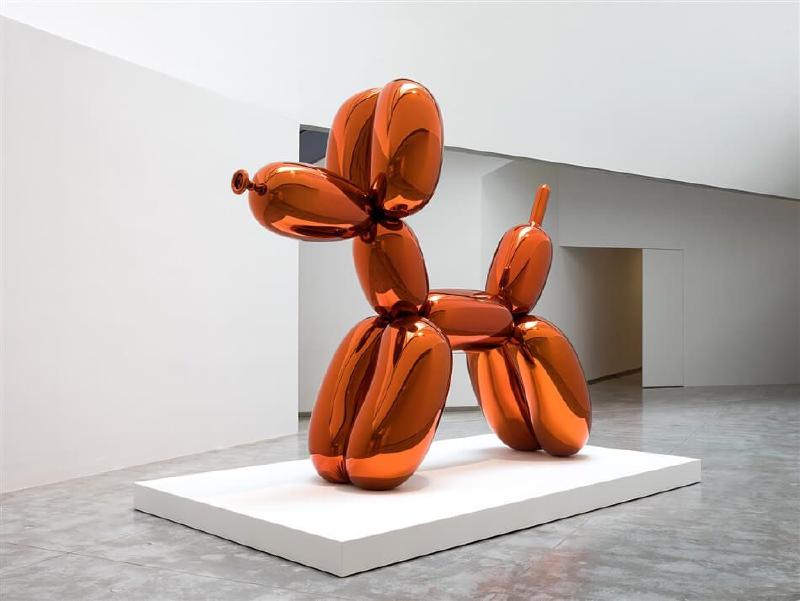
Such works can evoke two opposing emotions in the viewer at the same time: Kitsch works are both aesthetically unpleasant and fun to look at. Its hard to set teh boundaries of Kitsch because the line between extreme and fun, banal and popular is fine. An object that some people do not value may be considered charming or interesting by a wider audience.Therefore, kitsch is inherently subjective and gains meaning depending on the context it belongs to.
Kitsch is not just “ugly” nor the signal of a basic and bad taste, its a more complicated cultural phenomenon. In art history, kitsch has typically been used to describe products that cater to superficial tastes, are emotionally exaggerated, and lack conceptual depth. However, this definition brings with it a reductionist perspective, putting all kitsch productions into the same category. According to Milan Kundera, kitsch is the state of ‘not wanting to confront anything disturbing’; in other words, it is an aesthetic filter that excludes the tragic and only allows for positive emotions. Clement Greenberg, on the other hand, sees kitsch as a form of popular art born in the industrial age, which has become culturally obsolete.

Common ground of these both statements is that kitsch is insincere and easy to consume. However these type of statements completely ignores the potential of kitsch because not every kitsch production is necessarily aesthetically worthless; some consciously embrace and subvert this aesthetic. A more accurate approach is to focus not on what kitsch does, but on how and why it is made. Kitsch is controversial not because it violates the sacred boundaries of art, but because it easily establishes an emotional connection with the viewer. Therefore, kitsch should be considered not only as banality, but also as a contradictory space caught between art, popularity, and emotion.
Examples of Kitsch in Turkey: Monuments Far from Aesthetics
In Turkey, especially in recent years,we can see some real life examples of kitsch sculptures and monuments in public spaces. Many municipalities have built exaggerated statues that lack aesthetic appeal, aiming to represent local values or products. These statues are “ugly” or “unaesthetic” at first sight but people make fun of them on social media and It attracts the interest of a broad audience. So they serve a different purpose rather than that of an artistic image.
Nasreddin Hodja Statue

The giant Nasrettin Hodja statue located at a rest area on the Konya-Afyon highway depicts the famous tale of the Hodja attempting to churn yogurt in the lake. This statue considered as kitsch beacuse of its exaggerated size, this figure, although it makes the local people smile, has been considered simplistic from an artistic perspective. A review on Gazete Duvar refers to this statue as the ‘giant Nasrettin Hodja churning yogurt into the lake’ and associates it with many similar works that could be deemed ‘ugly’ aesthetically.
Malatya Apricot ATM
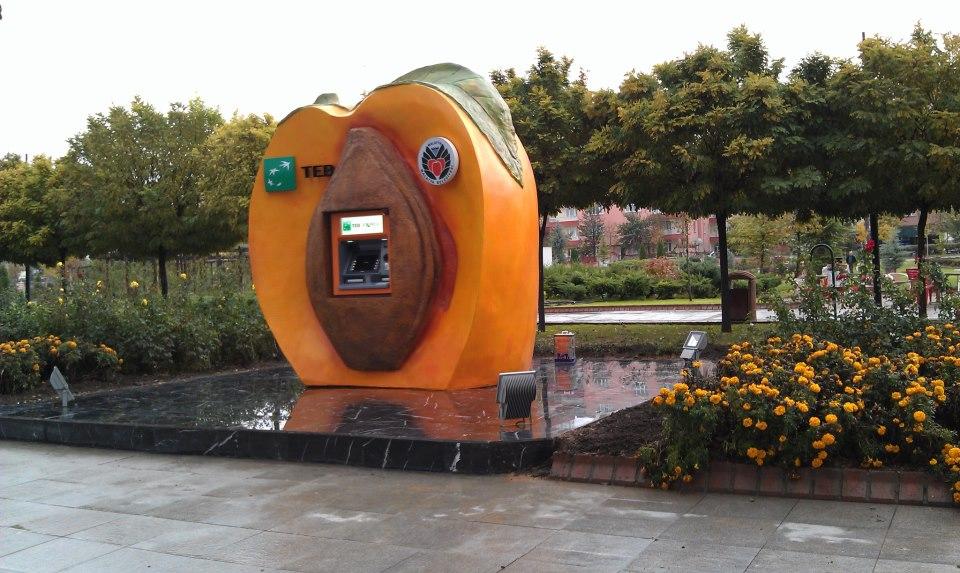
The apricot shaped ATM machine that once was in use in Malatya had an aim of promoting the city’s famous apricot. This ATM, designed to resemble an Malatya apricot, seemed fun at first glance, but its “vulgar” and joke-like design was criticized and ultimately removed. The transformation of a functional object like an ATM into a fruit form revealed the mismatch between function and form, in line with the concept of kitsch.
Rize Tea Glass Monument

The giant tea glass shaped structure under construction in Rize is designed to have a viewing terrace and a tea museuminside. Claimed to be the world’s largest tea glass sculpture, it has been nominated for a Guinness World Record. This monument mimics the shape of a traditional Turkish tea glass in oversized dimensions. While supporters of the project present it as a tribute to the city’s tea culture, critics label the monument as kitsch due to its directness and lack of proportion in design. Instead of the creativity expected from a work of art, The monument consists of enlarging a common object and displaying it in an exaggerated manner.
Presidential Palace

The Presidential Complex, commonly referred to as the “White Palace”, opened in Ankara in 2014 has also become a subject of kitsch discussions due to its architectural style and grandeur. While the palace attempts to combine elements from Seljuk and Ottoman architecture within a modern complex, its eclectic and excessively ornate style has been criticized by some architects as “arabesque and kitsch.” This structure, symbolizing state power, can be considered an example of “low-quality ostentation” due to its approach that showcases wealth and splendor rather than aesthetic harmony. Here, kitsch appears not only in sculptures but also on an architectural scale.
The examples above can be considered unintentionally made examples of kitsch aesthetics. The creators were likely intending to present these works as pieces of art; however, the results, lacking artistic abstraction and refinement, became subjects of mockery among the public. These sculptures and monuments evoke both anger and amusement with their absurd appearances. Because of this, it’s hard for the viewer to find any real artistic value in the work. The line between art and kitsch appears here: When a piece of art doesn’t make the viewer think deeply or feel pleasure, and just shows an exaggerated version of something familiar, that’s when it becomes kitsch. Frequently shared on social media, these figures lead people to exclaim that they are too much. Users describe them with terms such as ‘banal, cheap, gaudy, tacky.’ New additions to this chain of objects, which briefly capture public attention before being forgotten, are constantly added. As critic Hakkı Yırtıcı puts it, this situation has led to the formation of an ‘open-air kitsch museum.
Almost Sacred: Kitsch Aesthetics in Odd Nerdrum’s Paintings
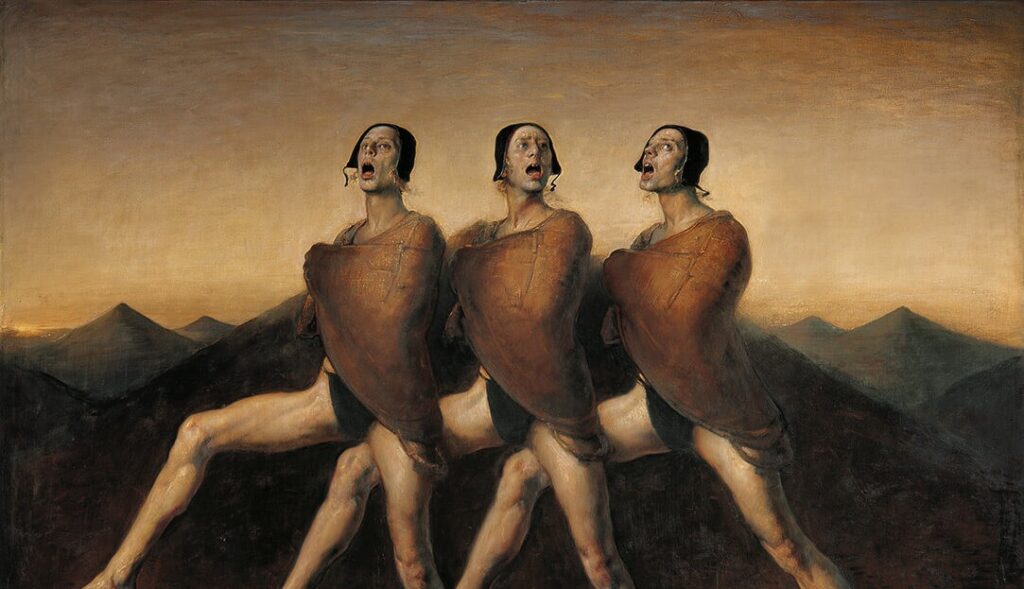
While “kitsch” typically carries a negative vibe within, Norwegian painter Odd Nerdrum has embraced the term and placed it at the center of his artistic identity. Nerdrum, who sticks to figurative painting and classical techniques, is distant from modernist abstract art. In 1998, he shocked the art world with a statement during his retrospective at the Astrup Fearnley Museum of Modern Art in Oslo. He declared that he was not an “artist” but a “kitsch painter.” This declaration was, in fact, a manifesto. Shortly afterward, he wrote a book titled On Kitsch, philosophically exploring the distinction between kitsch and art. Nerdrum’s bold stance led to the formation of an international “Kitsch Movement” by his students and followers, who began referring to themselves as “kitsch painters” rather than “artists.”
At the core of Odd Nerdrum’s embrace of kitsch lies a radical critique of modern art. Modernism considered traditional figurative and emotional art as “outdated” and “kitsch” while supporting abstract art and new ideas. Nerdrum, however, reverses this ideas. For him, kitsch is the continuation of classical painting, rich in sincere emotion and expression. Indeed, Nerdrum points out the hidden depth of kitsch in a paradoxical way when he says, “Kitsch has a deep superficiality; art claims depth on the surface.” In his philosophy, kitsch is not about being simple or vulgar, but rather a form of expression that speaks to the unchanging essentials of human experience. Themes such as birth, death, love, pain, the mother-child relationship, exile, and the apocalypse hold a central place in Nerdrum’s paintings. In this sense, kitsch addresses “the unchanging experiences of human life” and presents them in a direct, often emotional, language.
According to Nerdrum, modern art is based on aesthetic indifference and irony, while kitsch re-establishes the value of skilled craftsmanship, technical ability, and a sense of mystery. Following in the footsteps of old masters like Rembrandt and Caravaggio, Nerdrum creates highly skilled works in terms of light, anatomy, and composition. In contrast to his contemporaries in conceptual art, narrative and metaphorical content take center stage in his work. Because of this, Norwegian critics often accuse him of being overly emotional and “nostalgic for the past.” One critic even labeled Nerdrum’s followers as “uneducated, narrow-minded bourgeois” and accused the artist of representing the victory of popular culture over art. However, Nerdrum fully embraces this “popularity.” He defends the classical idea of beautiful and emotional images, which modernity has wrongly dismissed as “non-art.” He critiques this attitude, saying, “Just as Christianity demonized its enemies, Modernism demonized its opponents by labeling them ‘kitsch.'” For Nerdrum, the concept of kitsch is not an insult but rather a “safe harbor” or a new superstructure.
Kitsch refers to good, figurative painting according to his artistic view since it involves technical skill and a tradition of craftsmanship. Unlike contemporary conceptual art, Nerdrum wants to include authenticity and storytelling into his works. A kitsch painter, instead of presenting an idea using terminology, directly incorporates it into the painting itself. Works created with this approach immediately evoke strong emotions in the viewer, and may even be considered “overly emotional”; however, according to the artist, this is a form of deep sincerity.
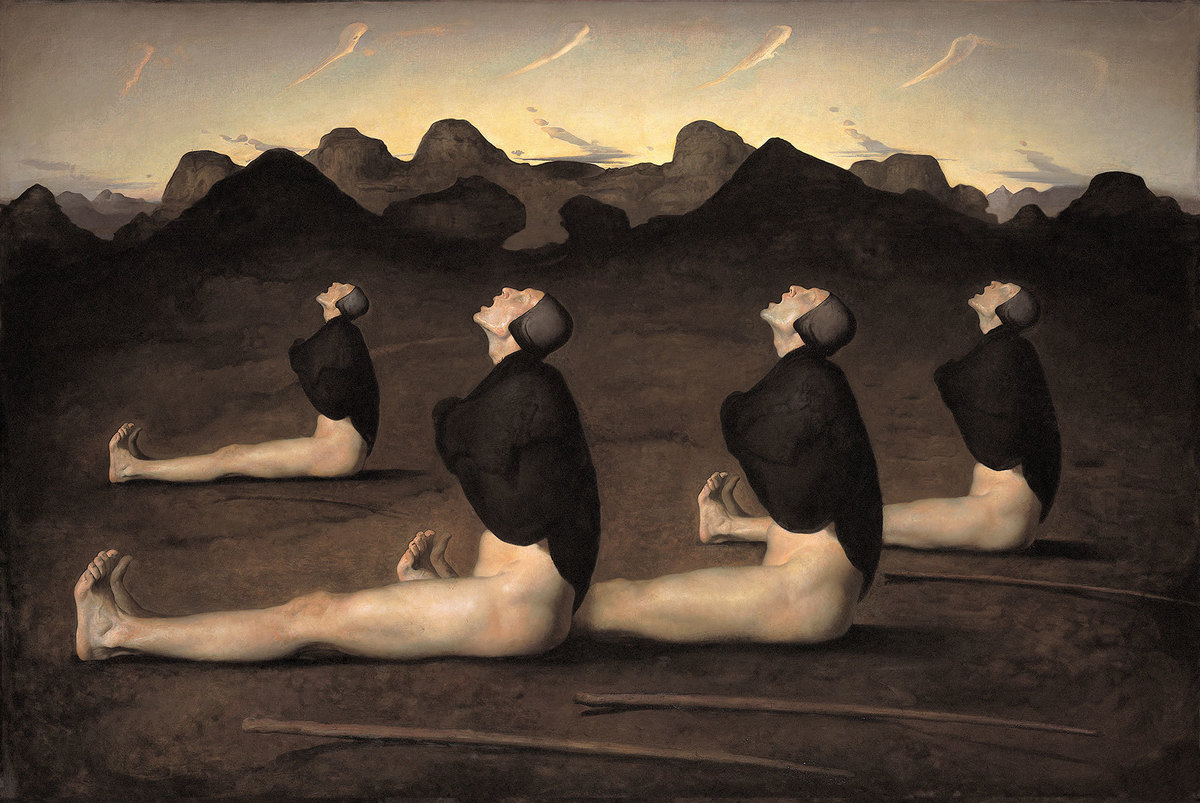
Nerdrum’s style is related to reusing the techniques of old masters. His color palette, which often includes earth tones, gold yellows, deep shadows, and sharp light contrasts reminds us Rembrandt. The figures in his paintings typically wear clothes from an undefined period which are neither entirely ancient nor completely modernadds a timeless quality to the artworks. The scenes are usually portrayed as desolate natural scenes, simple rooms, or mythological no-man’s lands, creating an atmosphere that is not tied to a specific geography or era. Instead, the focus is placed on universal human conditions.
From this, we can also understand that kitsch is not only “ugly,” but sometimes it is also the attempt to create somethingin a “most beautiful way”. Therefore, to determine whether something is kitsch, we should not only look at its aesthetic value. Sometimes, it is about whether an emotion is exaggerated, how much it deviates from its context, or how much effort is made to force that context into the work.
Odd Nerdrum’s works can be considered nearly sacred in terms of their subjects and the imagery he employs. Even as the artist embraces the concept of kitsch, he imbues his paintings with a seriousness that often recalls religious art. Some critics have described his large-scale canvases and intensely emotional scenes as embodying a form of “secular sacredness.” This is particularly evident in certain works by Nerdrum.
“Second Birth” (2004)
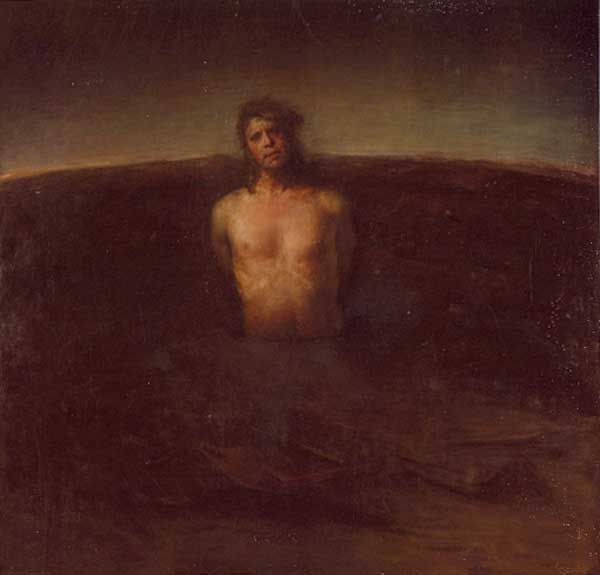
Odd Nerdrum’s large-scale self-portrait Second Birth is one of the works in which he visually conveys his kitsch manifesto. Frequently using himself as a model in his canvases, Nerdrum depicts himself in this painting with a crown of thorns, presenting a Christ-like figure. Through this bold and ego boosting allegory, he explores the theme of “rebirth through suffering.” The crown of thorns, traditionally a symbol of the suffering savior, is placed on his own head, allowing Nerdrum to question his position in the world while making the work purely symbolic. In the composition, Nerdrum’s arms are bound and his legs are sunk into the earth, portraying that the act of rebirth is carried out by an external force. The expression on his face conveys a “blessed” serenity, a look of purification through pain, gazing upward with enlightenment. Critics interpret the artist here as presenting himself as an Orpheus or a Christ: “He is an Orpheus, a Christ. He is reborn through suffering.” This duality of high symbolism and personal narrative is a repeatedaspect of Nerdrum’s work. Second Birth stands at the intersection of the worldly and the divine; it visualizes the boundary between birth and death, victory and defeat, the physical body and the spirit, capturing a moment “where the secular meets the sacred at the threshold.” The painting exemplifies how kitsch can turn into “simple sentimentality” through kitsch, Nerdrum presents the transformation of his inner world almost as if it were a religious icon.
“Lunatics” (2004)
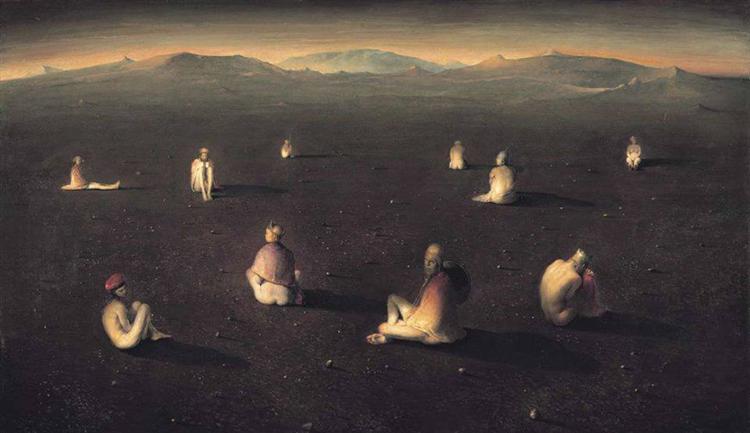
This large-scale painting from the same period exemplifies Nerdrum’s approach to group figure compositions. Lunatics depicts about ten figures gathered on a little tilted, purple-hued terrain. The individuals sit together in apparent deep contemplation; some gaze toward the horizon, others look down at the ground, all motionless as if awaiting something.
A striking feature of the work is Nerdrum’s departure from his usual muted brown palette, employing an extraordinarily bright and intense color scheme. Along the sky and horizon, fuchsia and deep purple tones dominate, while rich crimson and ruby reds appear in the figures’ clothing and surroundings. In contrast, flashes of vivid cerulean blue and earthy yellows punctuate the scene. These jewel-like, vibrant colors inject unexpected energy into the painting. The composition is expansive and open: unlike the confined, narrow spaces often seen in his earlier works, there is a strong sense of depth and boundless space. The figures are loosely arranged without physical contact, distributed across the purple landscape almost like “precious stones.” Some hold shields, others wear unusual crowns or helmets, while a few are completely nude and such details suggesting that each figure may carry its own story. The lack of interaction among the characters creates a tension between their collective presence. Critics note that Lunatics conveys a kind of collective trance and, compared to Nerdrum’s previous darker works, evokes a more hopeful sense of “waiting.” The vibrancy of the colors and the ceremonial arrangement of the figures give the painting a mystical atmosphere. In this way, Nerdrum elevates the emotional and direct impact of kitsch, merging it with compositional depth and symbolic mystery to achieve a high artistic plane.
“Self Portrait with Nosebleed” (1994)
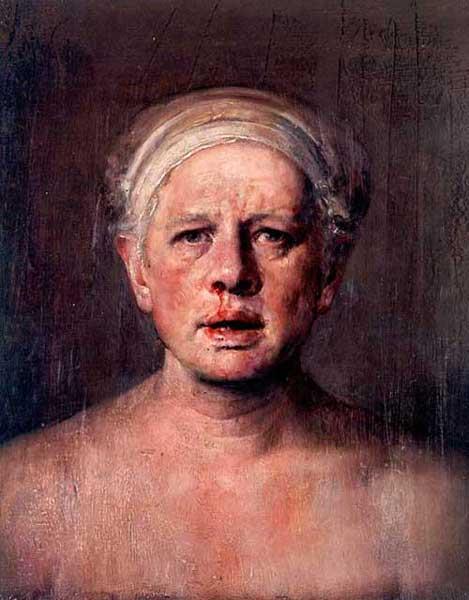
These examples clearly illustrate Odd Nerdrum’s understanding of kitsch. While he maintains technical mastery and the figurative tradition, Nerdrum elevates kitsch toward the sacred through symbolism he incorporates into his works. The figures in his paintings appear as prophets, sufferers, lunatics, or martyrs, recalling classical religious art. Yet, Nerdrum’s aim is not to convey a dogmatic religious message, but to present a timeless scene reflecting the essence of the human soul. He defines transcendence not in the religious sense of “rising above this world,” but as “lifting the body out of temporal reality into an eternal atmosphere.” In other words, for Nerdrum, kitsch is a means of stripping away the masks of the modern world to illustrate humans with raw reality and instinctive purity. In this respect, his approach to feels like a search for the hidden truth beneath the ordinary.
This work demonstrates his mastery of kitsch through both subject and composition. The artist positions himself centrally, occupying almost the entire canvas, immediately drawing the viewer’s attention to the raw, unsettling image of his bloody nose. The close framing creates an intimate, almost claustrophobic atmosphere, emphasizing the vulnerability and corporeal reality of the figure. Nerdrum employs dramatic chiaroscuro, with deep shadows contrasting sharply against bright skin, which adds up to the emotional intensity and gives the portrait a theatrical, almost baroque quality. The figure’s direct gaze engages the viewer, while the careful placement of hands, posture, and subtle gestures adds narrative depth, as if telling a story beyond what you see at first sight.
The Intersection of Art and Kitsch
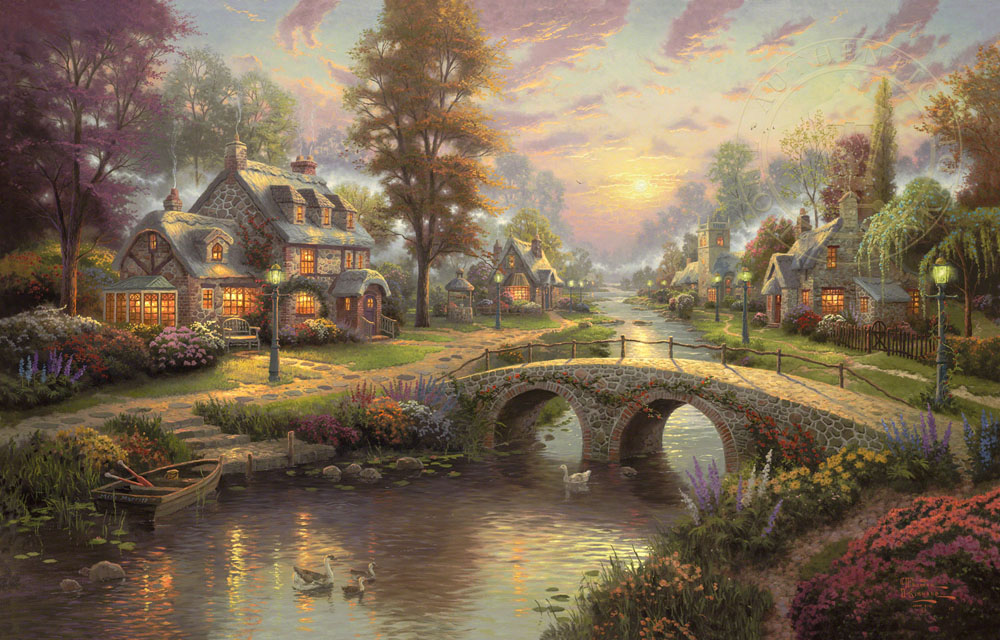
The boundaries of kitsch are shaped both by the creator’s intention and the viewer’s perception. As seen in examples from Turkey, such as the Nasrettin Hoca statue, the giant watermelon, or the tea glass monument, unconscious kitsch often appears as an aesthetic failure. These objects, rather than holding artistic value, exaggerate the cultural reference to which they belong. They provoke a brief smile or surprise in the viewer and are quickly consumed. This type of kitsch can be described as “the product of easy, conformist taste.”
In contrast, artists like Odd Nerdrum deliberately use kitsch as a form of expression, pushing its boundaries. Nerdrum transforms elements often labeled as kitsch and uses sentimentality, traditional figures, dramatic scenes, creates his artwith an almost spiritual weight. His paintings demonstrate how a narrative style, often dismissed as “non-art,” can actually be profoundly powerful. By rejecting the assumption that kitsch is shallow, he captures universal and deep emotions beneath the surface imagery.

Ultimately, whether a sculpture or painting is considered kitsch depends on its quality of execution, context, and the meaning it conveys. Unconscious kitsch remains works that lack aesthetic and intellectual depth, whereas conscious kitsch, when employed skillfully, can evoke powerful insight and shared emotion in the viewer. The boundary between kitsch and art is not absolute, contrary to common belief. This line may reflect distinctions imposed by the prevailing art ideologies of a given period.
Indeed, the Kitsch Movement pioneered by Odd Nerdrum reminds us that sincerity, craftsmanship, and humanity in art have not disappeared, even if they have been excluded from “high art.” If kitsch serves as an expression that resonates with the collective emotions of the masses, it may be more productive to seek the human essence within it rather than dismiss it entirely. As Nerdrum emphasized, modernist aesthetics demonized kitsch; yet kitsch may hold the potential to bring to the surface certain truths that lie suppressed within the depths of the human spirit.
Kitsch examples in Turkey point to absurdities that have become part of everyday life, while Odd Nerdrum’s kitsch manifesto demonstrates that on the other side of this absurdity lies an approach to art capable of telling the timeless stories of humanity. In this way, kitsch serve both as a mirror we critique and a consolation we embrace, much like life itself: at times tragicomic, at times profound and meaningful.

